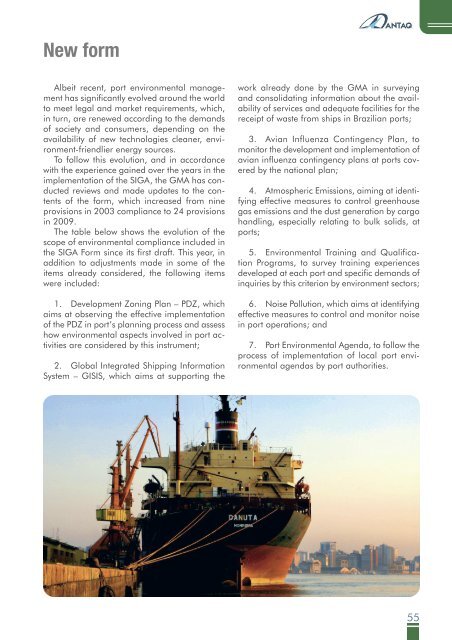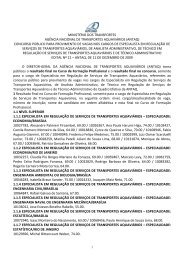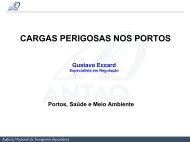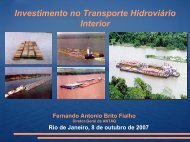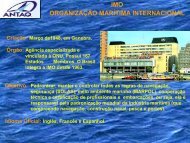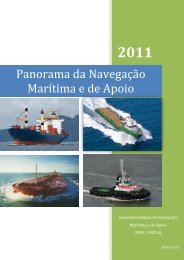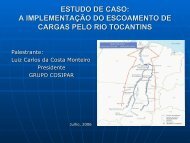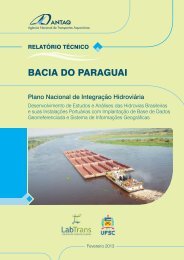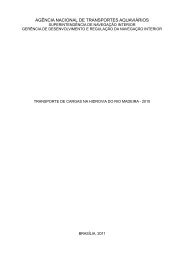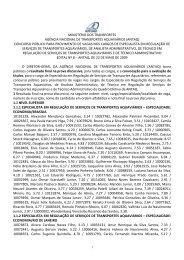Waterway Panorama - Antaq
Waterway Panorama - Antaq
Waterway Panorama - Antaq
You also want an ePaper? Increase the reach of your titles
YUMPU automatically turns print PDFs into web optimized ePapers that Google loves.
New form<br />
Albeit recent, port environmental management<br />
has significantly evolved around the world<br />
to meet legal and market requirements, which,<br />
in turn, are renewed according to the demands<br />
of society and consumers, depending on the<br />
availability of new technologies cleaner, environment-friendlier<br />
energy sources.<br />
To follow this evolution, and in accordance<br />
with the experience gained over the years in the<br />
implementation of the SIGA, the GMA has conducted<br />
reviews and made updates to the contents<br />
of the form, which increased from nine<br />
provisions in 2003 compliance to 24 provisions<br />
in 2009.<br />
The table below shows the evolution of the<br />
scope of environmental compliance included in<br />
the SIGA Form since its first draft. This year, in<br />
addition to adjustments made in some of the<br />
items already considered, the following items<br />
were included:<br />
1. Development Zoning Plan – PDZ, which<br />
aims at observing the effective implementation<br />
of the PDZ in port’s planning process and assess<br />
how environmental aspects involved in port activities<br />
are considered by this instrument;<br />
2. Global Integrated Shipping Information<br />
System – GISIS, which aims at supporting the<br />
work already done by the GMA in surveying<br />
and consolidating information about the availability<br />
of services and adequate facilities for the<br />
receipt of waste from ships in Brazilian ports;<br />
3. Avian Influenza Contingency Plan, to<br />
monitor the development and implementation of<br />
avian influenza contingency plans at ports covered<br />
by the national plan;<br />
4. Atmospheric Emissions, aiming at identifying<br />
effective measures to control greenhouse<br />
gas emissions and the dust generation by cargo<br />
handling, especially relating to bulk solids, at<br />
ports;<br />
5. Environmental Training and Qualification<br />
Programs, to survey training experiences<br />
developed at each port and specific demands of<br />
inquiries by this criterion by environment sectors;<br />
6. Noise Pollution, which aims at identifying<br />
effective measures to control and monitor noise<br />
in port operations; and<br />
7. Port Environmental Agenda, to follow the<br />
process of implementation of local port environmental<br />
agendas by port authorities.<br />
55


